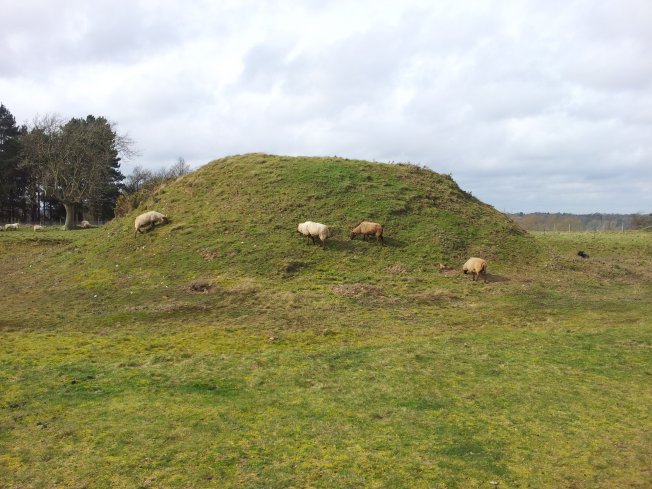 Time for a review amongst all the excitement of Scenes from a Life and the ABNA awards.
Time for a review amongst all the excitement of Scenes from a Life and the ABNA awards.
So, this review covers the first two books in Morgan Alreth’s The Unfortunate Woods series – Athame and Wrath. The series continues in a third book which at the time of writing has not yet been released.
These are fantasy books, set in a world where humans are the most numerous species, but share the land (and especially the forest) with several other natural and supernatural life forms. Relationships between the species tend to drift from neutral towards hostile, with occasional times of cooperation for specific shared goals.
Magic is, as you might expect, a vital part of the setting. The magic system is based around the four classical elements (fire, water, earth, air), with connections to the four seasons as well as other binary or four-fold natural or human divisions. Each element is linked to a deity with suitable qualities. It seems to me to be fundamentally well thought-out, particularly in Wrath where there is more development of the interconnections. An important plot theme is that pretty much any serious use of magic tends to have unpredictable side-effects, small compared to the original purpose but needing to be taken into account.
Athame opens in a wild and dangerous forest. A woman living here, Jess, chooses to help a man, Pete, who is lost, saving his life from any number of potential threats. He turns out to be a significant player in the royal succession drama unfolding in the country. Unsurprisingly, but credibly, the two eventually become lovers.
The plot continues with Jess and Pete venturing out of the forest and back to the capital city. This turns out to be every bit as dangerous as the wild forest, but with human rather than exotic enemies. There are definite echoes of Crocodile Dundee here, though the gender roles are switched, and the couple here is much more equally matched in talent and ability.
Athame ends with them having resolved a serious external threat, but separating for what appear to be perfectly sensible and necessary reasons. However, this is a source of grief to both.
Wrath – over twice as long according to my kindle – tracks subsequent events. They start separately, in different regions of the world, as they try to resolve their individual destinies; both have to face different but significant threats. Eventually they reunite, but tact and spoiler avoidance forbids me saying how this turns out. Suffice it to say that their quest returns them to their country of origin, which by now has fallen into serious civil unrest.
The hints and clues you get about the third book indicate that the overall problems of succession and disunity will be resolved, perhaps with a level of reconciliation between the various non-human species as well.
So, the books are interesting, and many aspects of the world seem credible to me. What are the down sides? Firstly, there is a theme I have also encountered in some of Morgan’s other writing. Rural settings may well be dangerous, but are basically clean and honourable; rural individuals are poor and bluntly spoken but honest. In contrast, cities and towns – anything bigger than a handful of houses together – are filthy, disease-ridden, and full of cruel and wickedly motivated individuals. Countryside is good: towns are bad. I am not really convinced by this.
In Athame, another rather simple binary opposition is between organised religion (largely in the hands of men and fundamentally corrupt) and personal spirituality (largely in the hands of women and basically uplifting and respectable). Wrath is more nuanced about this, and smooths out the earlier stark contrast into lots of intermediate shades of a spectrum.
Another difficulty is with the opponents. I guess it is par for the course for fantasy heroes to get increasingly more powerful themselves, and have a coterie of increasingly powerful followers. But how do you then find worthy adversaries? Somehow, the filthy, disease-ridden cities and their temples manage to turn out a whole collection of fearsome, top-of-the range fighting men and magician-priests.
The production of the kindle copy is mixed. My copies were downloaded from Smashwords, and the rather patchy navigation may be a consequence of that site’s conversion software. However, there are a surprising number of spelling errors, format problems, and other minor issues which should have been caught during rounds of proof reading.
In summary, these two books still come out as four star books for me. Certainly worth the read if you like fantasy books, and the series develops some interesting ideas. The gradual build-up of the plot is credible. Speaking as a Brit, some of the dialogue rather grates, but US readers might appreciate it more. However, the flaws which I have mentioned diminished my enjoyment of the whole, and made me feel that Morgan could have lavished a little more care on the production of the books as well as the imaginative aspects. I do intend to catch up on the conclusion of the series in time, so these flaws have not deterred me from carrying on.
These books were made available to me without charge but with no expectation of a review.








 Time for a review amongst all the excitement of
Time for a review amongst all the excitement of 



 Now, it is clear from occasional comments in the book that the plot draws from traditional Indian literature, in particular the Mahabharata. My knowledge of this is quite scanty, but fortunately I was able to get some pointers from Indian friends. I suspect that a greater familiarity with both the history and myth of India would open up other dimensions of this book which remained largely opaque to me. Even without that, though, there is enough here of humanity’s common sources of comfort and conflict that the story hangs together well.
Now, it is clear from occasional comments in the book that the plot draws from traditional Indian literature, in particular the Mahabharata. My knowledge of this is quite scanty, but fortunately I was able to get some pointers from Indian friends. I suspect that a greater familiarity with both the history and myth of India would open up other dimensions of this book which remained largely opaque to me. Even without that, though, there is enough here of humanity’s common sources of comfort and conflict that the story hangs together well.